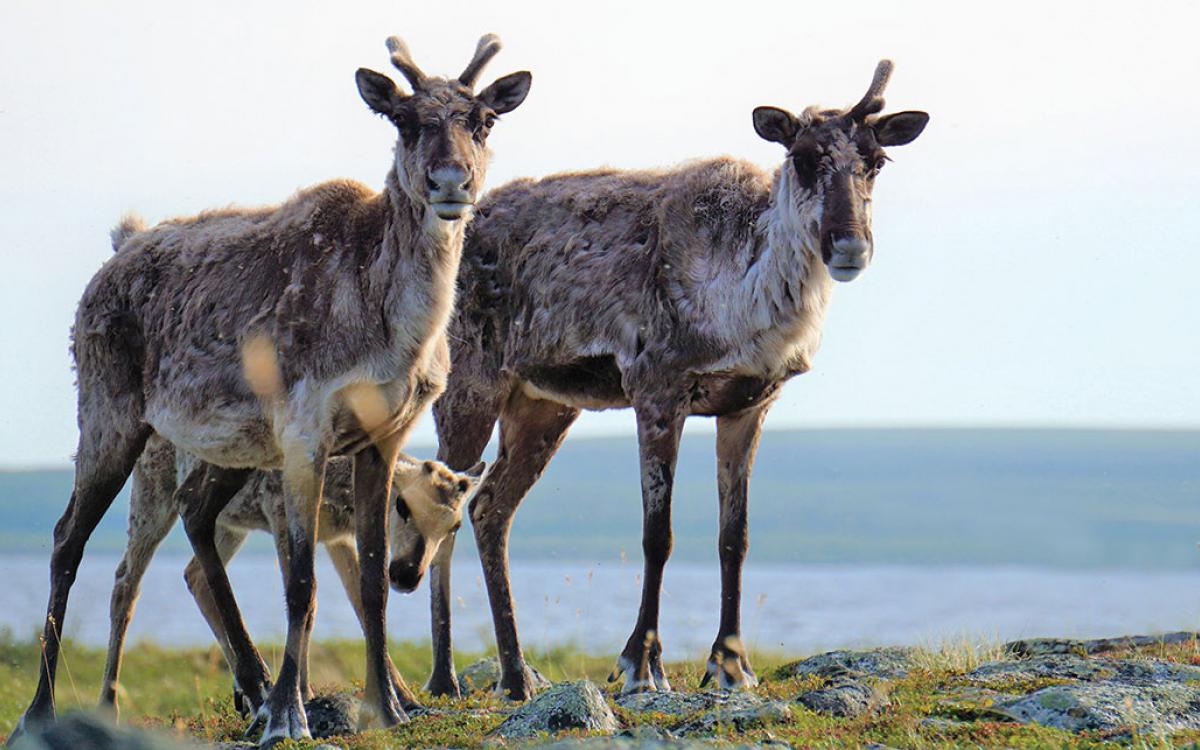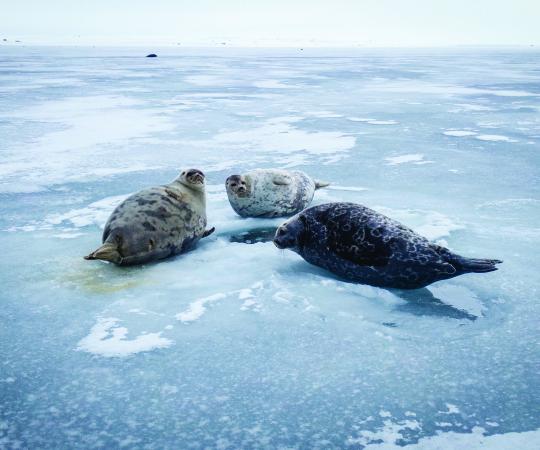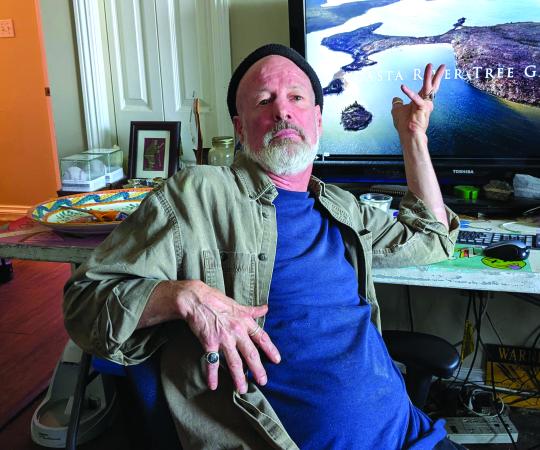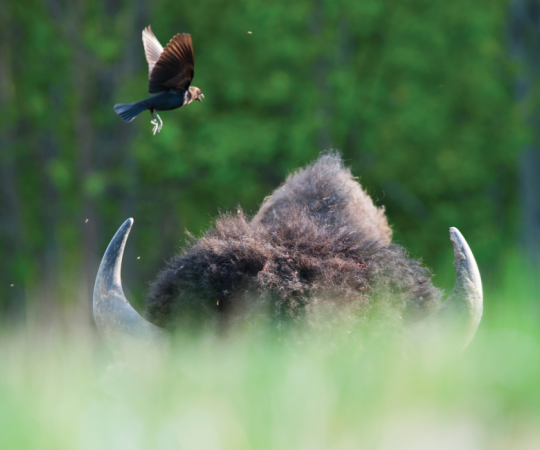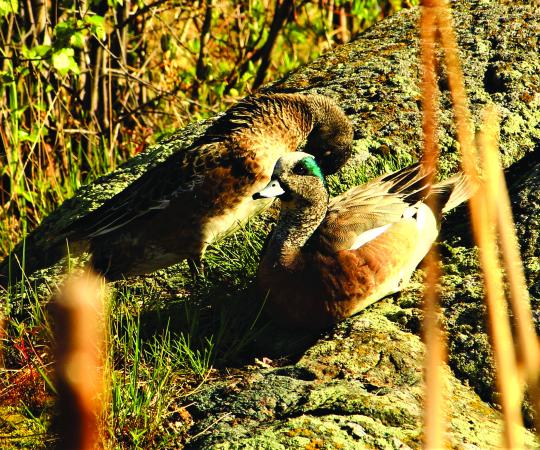The barrenlands have changed dramatically over the past half-century. Snow is melting several weeks earlier. Mid-summer water levels in lakes and rivers are down. And higher temperatures are drying out vegetation that helps sustain caribou as they migrate.
These are some of the key observations made by Tłįchǫ elders over the past two summers as part of Boots on the Ground, an innovative caribou-monitoring collaboration between governments and industry that puts traditional knowledge at the forefront. By drawing on the elders’ historical experience, the project aims to uncover clues to the Bathurst caribou’s mysterious decline. The herd is a vital part of Tłįchǫ life, but over the past three decades its number has shrunk from more than 500,000 to less than 20,000 today—an astonishing drop that scientists have been unable to fully explain.
Boots on the Ground is one of the few field-monitoring programs in the world that directly engages elders. “The elders have lived on the land all their lives, they’ve interacted with caribou all their lives,” says Petter Jacobsen, a traditional knowledge researcher with the Tłįchǫ Government. “When you have a culture that’s been focussed on a particular piece of land and the movement of animals on it for hundreds and thousands of years, they’re going to have a very in-depth understanding of it.”
For the past two summers, two teams of six—a Tłįchǫ elder, young hunters and traditional knowledge researchers like Jacobsen—spent three weeks in western Nunavut, near the caribou’s post-calving migratory route. From a cabin on Contwoyto Lake, they travelled by boat and on foot, sometimes hiking more than 20 kilometres in a day to follow the herd. At more remote sites, they set up overnight camps using canvas wall tents.
Each day, the elders looked for indicators of the caribou’s health—everything from the colour of the animal’s hide to the length of its tail—as well as changes in the environment. Research assistants followed closely behind, recording these observations and using a GPS and digital camera to log notable locations along the caribou’s migration route. “We really followed the elders’ lead in terms of what we were going to track that day,” says Jacobsen, who is now compiling those observations into a final report.
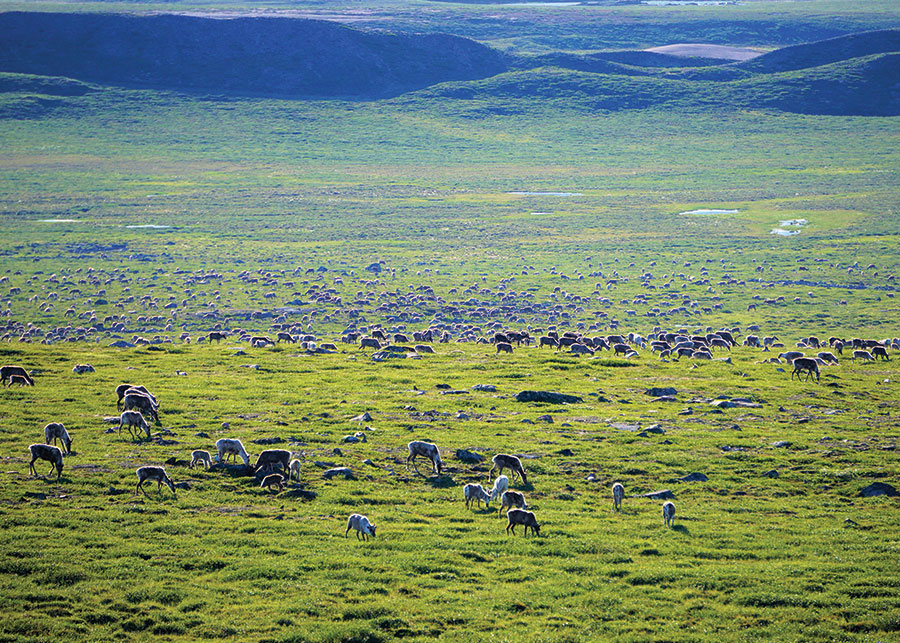
The program is largely based on how Northern Indigenous people gathered information in the past, even before contact, says John B. Zoe, the Tłįchǫ Research and Training Institute chair. Those observations had to be reliable, he says, “because their lives depended on it.”
The marriage of traditional knowledge and Western science has never been an easy one. Until fairly recently, wildlife research has been the domain of scientists with specialized degrees, who focussed largely on collecting field data and crunching numbers.
“Twenty years ago, a lot of people in natural sciences didn’t give much thought to traditional knowledge,” says Henry Huntington, Arctic science director with Ocean Conservancy. “Worse, some thought it was just folklore.”
One of the biggest barriers, Huntington says, was that biologists weren’t trained to conduct interviews, which is how traditional knowledge is often gathered. “Interviewing is typically a social science method, whereas wildlife is a natural science,” he says. In some remote communities, language can be an obstacle. Nowadays, it’s common for wildlife biologists to work in tandem with a traditional knowledge expert and a translator.
Huntington argues there’s been a big shift in the value placed on traditional knowledge over the past two decades. The reason? Aside from the immediate institutional knowledge, it offers a depth of time, or “the unique ability to understand the landscape 50 or 100 years ago, or even longer,” he says. “It also provides a year-round perspective, whereas field research is often carried out only in the summer.” Traditional knowledge tends to be more holistic—seamlessly connecting the dots between climate, habitat and individual species, unlike academic research, which is often narrowly focussed. ➻
Karin Clark, a wildlife biologist with the Government of the Northwest Territories, says modern land claim agreements often require that traditional knowledge be considered in land management decisions. The territorial government has a similar policy for its staff. “Those requirements really provided the foundation for the Northwest Territories becoming a leader in this area,” she says.
Clark acknowledges it’s not always easy to mesh Western science with traditional knowledge. But there are so many benefits to doing so. She points to a recent project that involved mapping locations where caribou cross water bodies—these are often critical links in the caribou’s migratory route. Using a map that showed hundreds of such crossings, Indigenous elders were able to prioritize the most significant ones to give them the highest level of protection.
Elsewhere in Canada’s North, the knowledge of Indigenous hunters and fishers is shaping conservation plans, most recently in the North Water Polynya and Lancaster Sound areas. Perhaps most telling, the UN’s Intergovernmental Panel on Climate Change—the global authority on science and policies around climate change—is planning to include a chapter on traditional knowledge in its next scientific report.
Two years in, the Tłįchǫ’s Bathurst caribou monitoring project has yielded some interesting results. The number of caribou is, of course, noticeably down from what the elders remember. Despite a ban on caribou hunting, they have not observed any rebound in the population. “Before, they would see caribou swim across a water crossing, or move across the land, for weeks or even months,” Jacobsen says. “Now, it’s just a few days.”
But the health of the individual caribou appears to be fine, Jacobsen says. This is evident through the colour of the animal’s hide, its posture, the amount of fat it carries and the pace at which it moves. In the elders’ words, “it is as it should be.”

Some of the most striking observations from the project so far have involved climate change, says Jacobsen. Historically, in early July any north-facing slopes near Contwoyto Lake would still have been covered with patches of snow. These provide caribou with a much-needed reprieve from the summer heat and the clouds of blood-sucking blackflies. But during this summer’s fieldwork, the landscape was completely barren. “There was nowhere for refuge,” Jacobsen says. It also meant that the valley bottoms, where caribou feed on vegetation, were exceptionally dry.
Could that subtle change be affecting the herd’s health? It’s still too early to say, but it’s that sort of observation—drawn from generations of knowledge of the landscape and of the animal itself—that the project is hoping to continue uncovering.
Whatever the outcome, the Boots on the Ground project marks an important step towards recognizing and incorporating the expertise of elders, says Zoe. “The observations we get out of it will truly belong to the Tłįchǫ people,” he says. “But the information can also be used for further research.”

